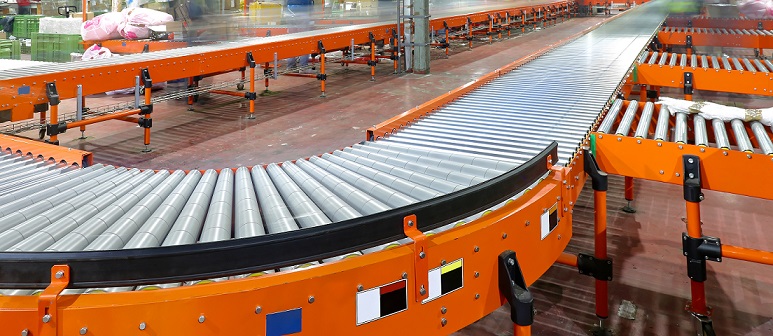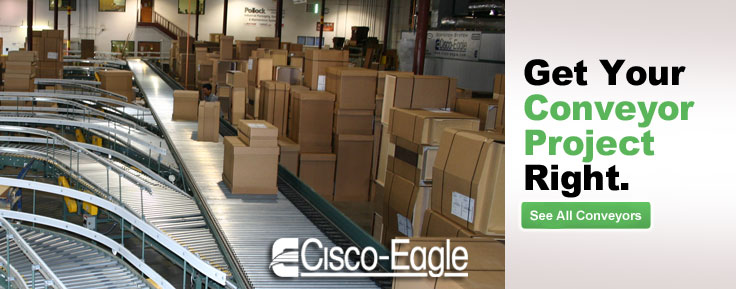Reasons to Replace Old Conveyors
When it's time to reconsider an underperforming system

Conveyor systems are usually built for durability and an extended working life. With consideration for certain factors like the type of product and usage rates, conveyors can run for years and generate excellent return-on-investment. However, ROI diminishes and the conveyor starts costing more money than it’s worth if it’s extended too long. Systems can be the lifeblood of warehouse operations, so relying on an old one can begin to cost more than replacing it.
There are signs to look for when you suspect your system is affecting your overall efficiency and bottom line.
Sometimes you have no choice
You might be forced into new conveyor by circumstances. You don’t get to decide when there is a major operational change, a critical equipment failure or other circumstances that forces you to replace your conveyors. Any timeframe or planning you had considered may be rendered irrelevant by something as simple as a product design change or SKU shift that no longer works with your conveyor system. You may have safety and regulatory issues that force a change.
Whatever the reason, you may find your schedule, timeframe and logic are thrown out the window.
The equipment becomes a constant source of repair and maintenance
While having regularly scheduled maintenance is a crucial factor in keeping equipment performing at peak levels, an increase in unscheduled repairs leads to increased costs and downtime for a facility. Seized rollers, clanking chains, premature belt failures are all types of repeat issues that an old system can produce. Taken separately, they can be simple annoyances, but it’s when they start to add up on an annual basis that you might want to make a change.
When you are forced to repair a conveyor too frequently, it’s time to consider upgrades.
Spare parts become difficult to find
There is always a need for spare conveyor parts to help keep your system running smoothly, but for older systems, certain inconveniences will arise. One common situation is for the manufacturer to start phasing out on equipment and parts, which makes it downright difficult to find the right components for either scheduled or unscheduled maintenance issues. Another factor is the cost of those parts over time. You still might be able to find the parts you need, but they could become so uncommon that the prices are now very steep and the lead times outrageous.
Technology may pass you by
A crucial consideration is what you’re losing out on by keeping that old system. Lack of current technologies could be hitting you with opportunity cost. Since the pace of updates and improvements only is moving faster and farther, there are increasingly more efficient ways to do things that provide long-term savings of time and money.
Energy consumption
For example, by upgrading to an E24 powered roller system, you can reduce energy costs and lower overall costs, not to mention peace of mind when it comes to maintenance. Embracing new technologies replaces headaches with possibilities, so don’t overlook what’s next.
It’s typically better from a pure dollars-and-cents perspective to maintain and repair aging equipment, but expense is hardly the only factor. How often you must repair, how frequently you are down, how much new technology could improve your operation and how much better a new conveyor could perform should all factor in. The purchase price of equipment is often far less than the efficiency it generates. See The Total Cost of Ownership
When you make the decision, what should you do?
If you have the luxury of timing and planning, conveyor replacement is easier. What are some considerations?
- Being proactive will minimize disruptions and downtime. If you are in a seasonal business, it’s better to pull the trigger during your offseason than being forced to do it during peak time, when orders are jammed and the system maxed out.
- If you can schedule in advance, note lead times. Some types of conveyors may not be available in a quick ship schedule and require weeks–sometimes months– of planning.
- If your conveyor has to interface with WMS, WCS, machinery, or other material handling equipment, you should know well in advance of replacement. You can often replace the machinery itself much faster than you can revise interfaces and integrations.
Opportunity knocks
Markets are always changing and moving forward, and your current industry might demand new or different order profiles (or even products). These new opportunities could also require new ways of production and distribution. Not looking forward and clinging to an old configuration may leave your operations behind and also allow for opportunity costs that exceed those of the right system.
One significant way this can impact operations is if orders need to be consolidated differently due to freight charges, shipping regulations, product changes, etc. The old system might require inefficient processing on the line, using more manpower or slower operating efficiency if it is not re-tailored to meet these needs.
Time comes for all conveyors, but by looking for the right warning signs, you can replace your old system and reap the future benefits.
More resources
- Conveyor proposal specifications
- ROI Considerations for conveyor systems
- Cisco-Eagle conveyor buyer’s guide
- Conveyor FAQ
Tags: Sustainability
Evan Fleishacker




